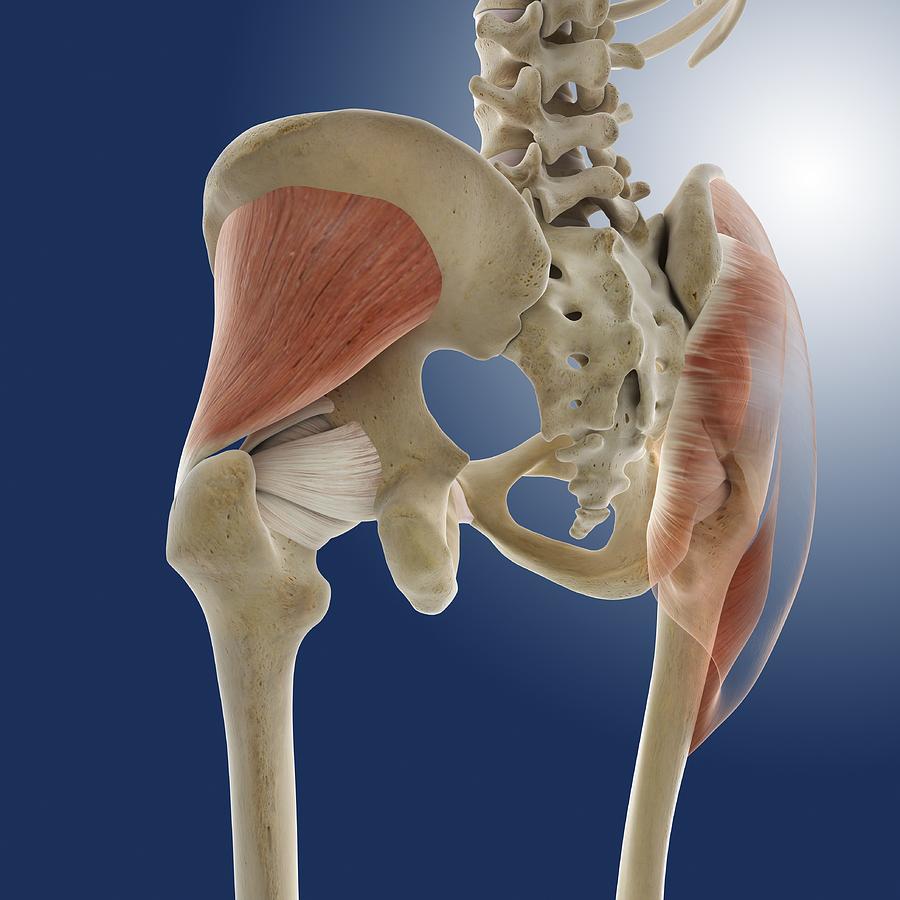
Buttock Muscles, Artwork Photograph by Science Photo Library
Anatomy The Buttocks The gluteal muscles (attached to the leg) are the following: the gluteus maximus, the gluteus medius, the small buttocks, the piriformis muscle, obturator internus muscle, upper and lower twins, femoral square, iliopsoas muscle, The gluteus maximus Of all the gluteal muscles, the gluteus maximus remains by far the most.
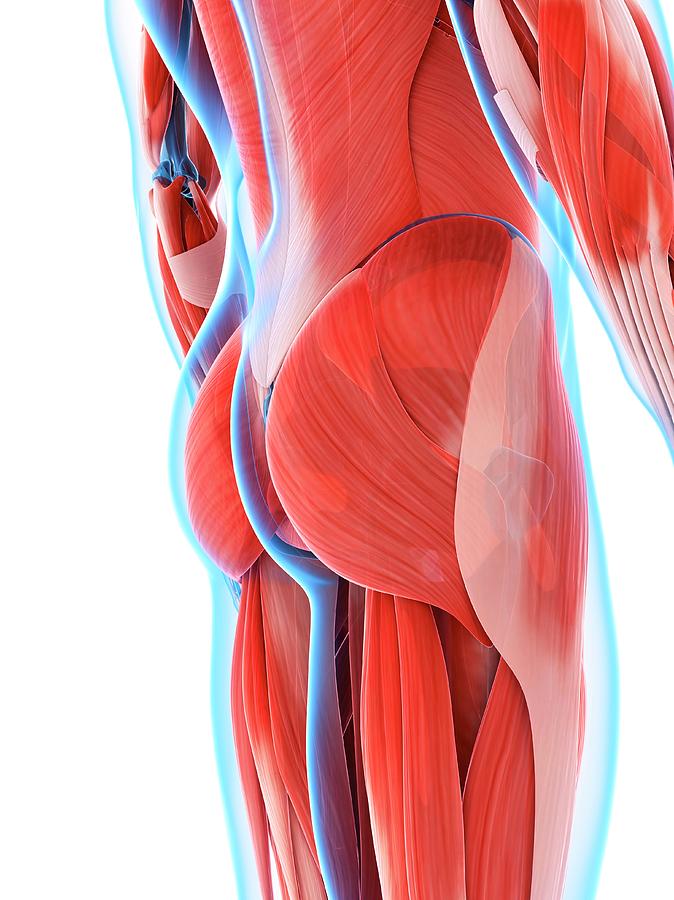
Human Buttock Muscles Photograph by Sebastian Kaulitzki Pixels
Gluteus Minimus. The gluteus minimus is the smallest and deepest of the gluteal muscles. Its job is to abduct the thigh and stabilize the hips/pelvis during walking, running, or standing on one leg. In addition, its anterior portion provides internal rotation to the thigh, while its posterior portion provides external rotation to the thigh.

Human buttock muscles, illustration Stock Image F011/6037 Science
The intergluteal cleft or just gluteal cleft, also known by a number of synonyms, including natal cleft, butt crack, ass crack and cluneal cleft, is the groove between the buttocks that runs from just below the sacrum to the perineum, [1] so named because it forms the visible border between the external rounded protrusions of the gluteus maximus.
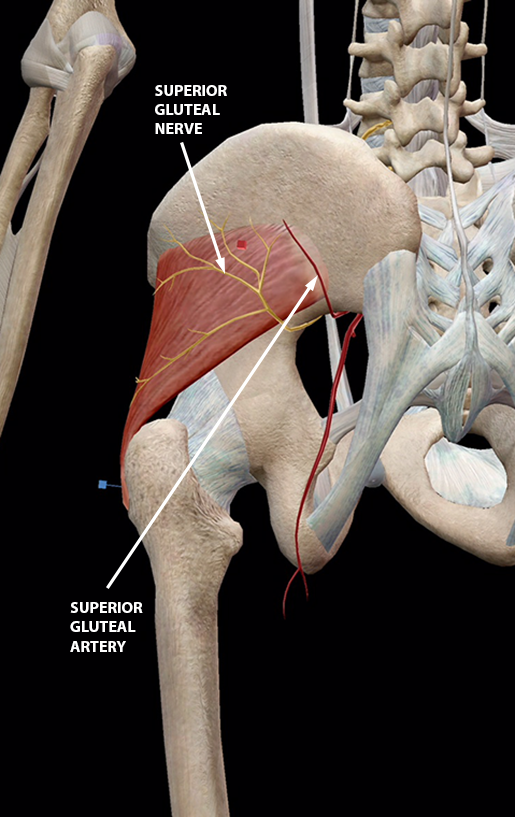
The Glorious Glutes Muscles of the Buttocks
Updated on February 23, 2022 Medically reviewed by Jason DelCollo, DO Table of Contents Anatomy Function Associated Conditions Rehabilitation The gluteus maximus muscle is the largest gluteal muscle located in the buttocks. Not only does it help move the thigh, it gives shape to the buttocks itself.
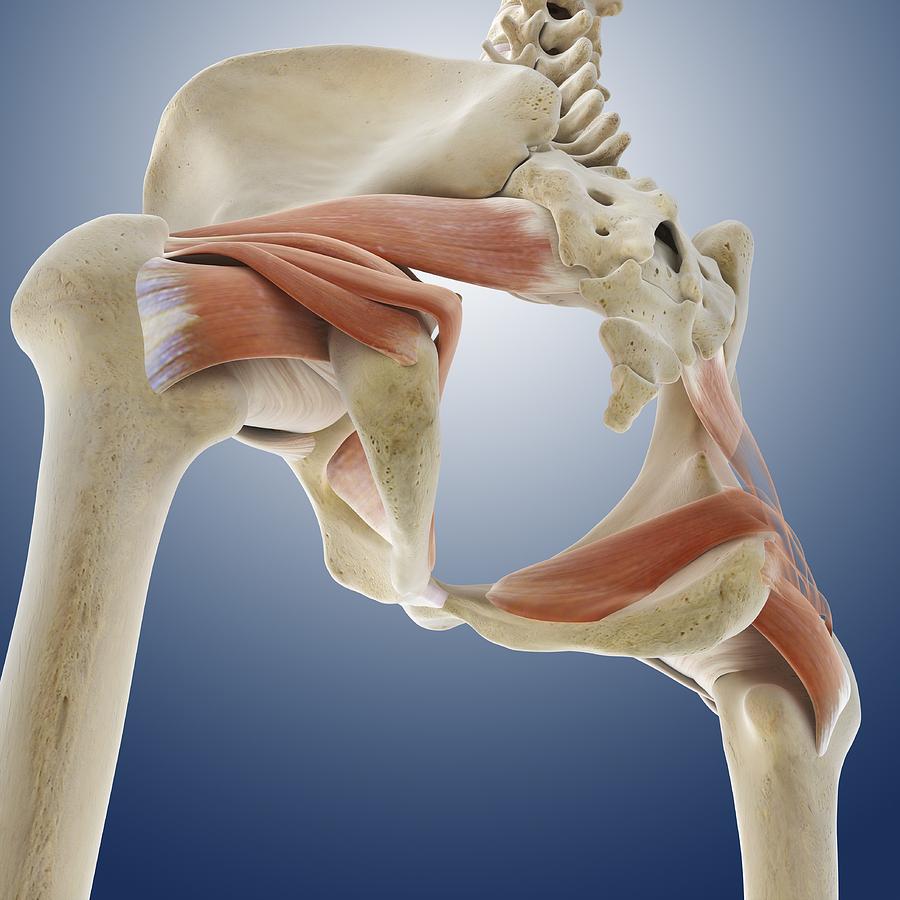
Buttock muscles, artwork Photograph by Science Photo Library Pixels
Anatomy of the human anus. Frontal section. The anus is the final part of the gastrointestinal tract, and directly continues from the rectum, passing through the pelvic floor. The top and bottom of the anus are surrounded by the internal and external anal sphincters, two muscular rings which control defecation.

Buttock Learn Surgery Online
The muscles of the gluteal region can be broadly divided into two groups: Superficial abductors and extenders - group of large muscles that abduct and extend the femur. Includes the gluteus maximus, gluteus medius, gluteus minimus and tensor fascia lata. Deep lateral rotators - group of smaller muscles that mainly act to laterally rotate.

Buttock muscles, artwork Stock Image C013/4419 Science Photo Library
Female butt with transparent skin and fat and visible muscles and ligaments. In this blog, we'll cover the muscles and fat pads of the butt. We will do this by reviewing the main differences between male and female butts, which differ quite a lot. If you're interested in the bony landmarks of the butt, check out our previous blog on this subject.
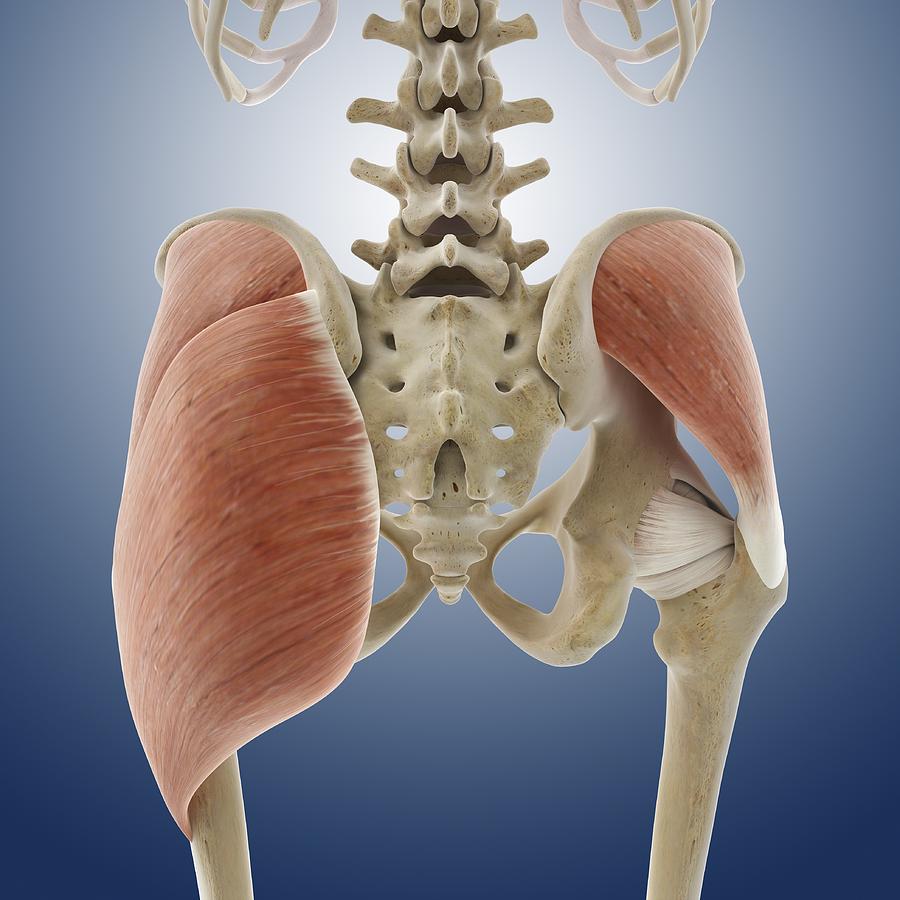
Buttock muscles, artwork Photograph by Science Photo Library Pixels
The gluteal muscles, also referred to as glutes or buttock muscles, are a muscle group consisting of the gluteus maximus, gluteus medius, gluteus minimus and tensor fasciae latae muscles. They are found in the gluteal, or buttock region, overlying the posterior aspect of the pelvic girdle and the proximal part of the femur.

Human buttock muscles, illustration Stock Image F012/7868 Science
Dr. Ebraheim's educational animated video describes the muscle anatomy of the hip and buttocks region with simple images; this video also provides you with all you need to know about this area,.

BUTTOCK MUSCLE BONES Anatomy Art Print for Medical Student Etsy
Lean back so that your shoulder blades are resting on the bench. Drive through your heels to lift your hips up, pushing the barbell upwards. At the top of the movement, your body should create a straight line from your shoulders to your knees. At the top of the lift, pause for a second and squeeze your glutes.

posterior butt/thigh muscles Diagram Quizlet
1/7 Synonyms: Anal cleft, Crena ani The intergluteal cleft is a surface anatomy landmark of the pelvis and lower limb. It is the deep furrow or groove that lies between the two gluteal regions (commonly known as the buttocks). It extends from sacral level S3 or S4 and ends just inferior to the apex of the sacrum, at the level of the anus.

Buttock muscles, artwork Stock Image F005/5449 Science Photo Library
Anatomy What is the anatomy of the anus? A row of vertical folds in the inside lining divides your anus into upper and lower parts. The folds form columns (anal columns) that are separated by grooves (anal sinuses) that end in smaller folds (anal valves). Your anal sinuses contain mucus-secreting glands.

Buttock muscles, artwork Stock Image C013/4424 Science Photo Library
Thigh internal rotation w/flexed hip - G-med and G-min. Thigh external rotation w/extended hip - G-med and G-min. Unraveling Compensatory Patterns: To Clench or Not to Clench (Your Butt) Four Points To Ponder About Your Backside: 1. "Barbell Squats Will Make My Butt Bigger". "Barbell squats will give you a huge butt.". I hear that.

4 Anatomy of the buttocks and pelvis (Image by Springer) Download
Fitness Exercise Tips The Complete Guide to Your Butt Muscles Here's how to ensure the largest muscle in your body isn't also the laziest. Read up on all the different butt muscles and how to effectively train them. By Stephanie Dolgoff Published on March 2, 2020 Photo: AleksandarGeorgiev/Gety Images

Get to Know Your Glute Muscles—And How They Support Your Practice
The anatomy of your butt Being informed about your anatomy—knowing where things are located in your body—is an important first step for anyone having anal sex. During anal sex, the penis (or dildo, or whatever) is inserted into the anus, past the external and internal sphincter muscles, and into the rectum.
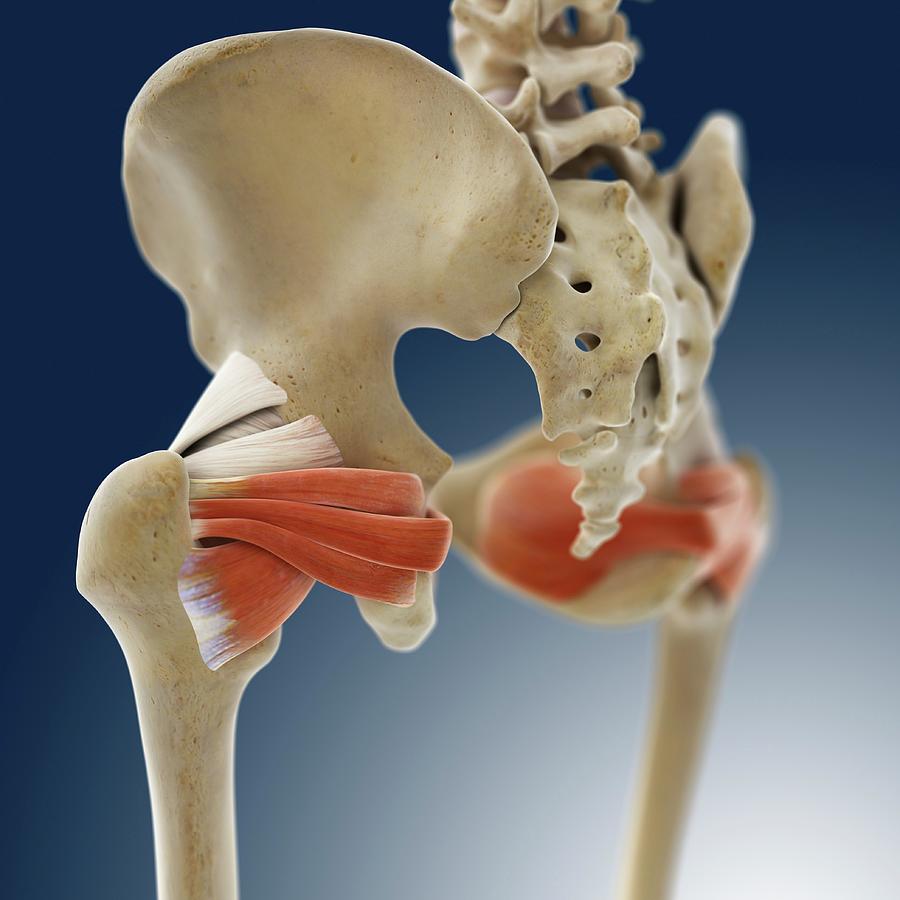
Buttock Muscles Photograph by Springer Medizin/science Photo Library
The gluteal region is an anatomically important area at the posterior aspect of the pelvis, which contains muscles critical to dynamic movements and upright stability of humans.[1][2] It is a key conduit for several important neurovascular structures passing into the lower limb.[3] The major muscles in this region are the gluteus maximus, medius, and minimus, of which the former is the largest.